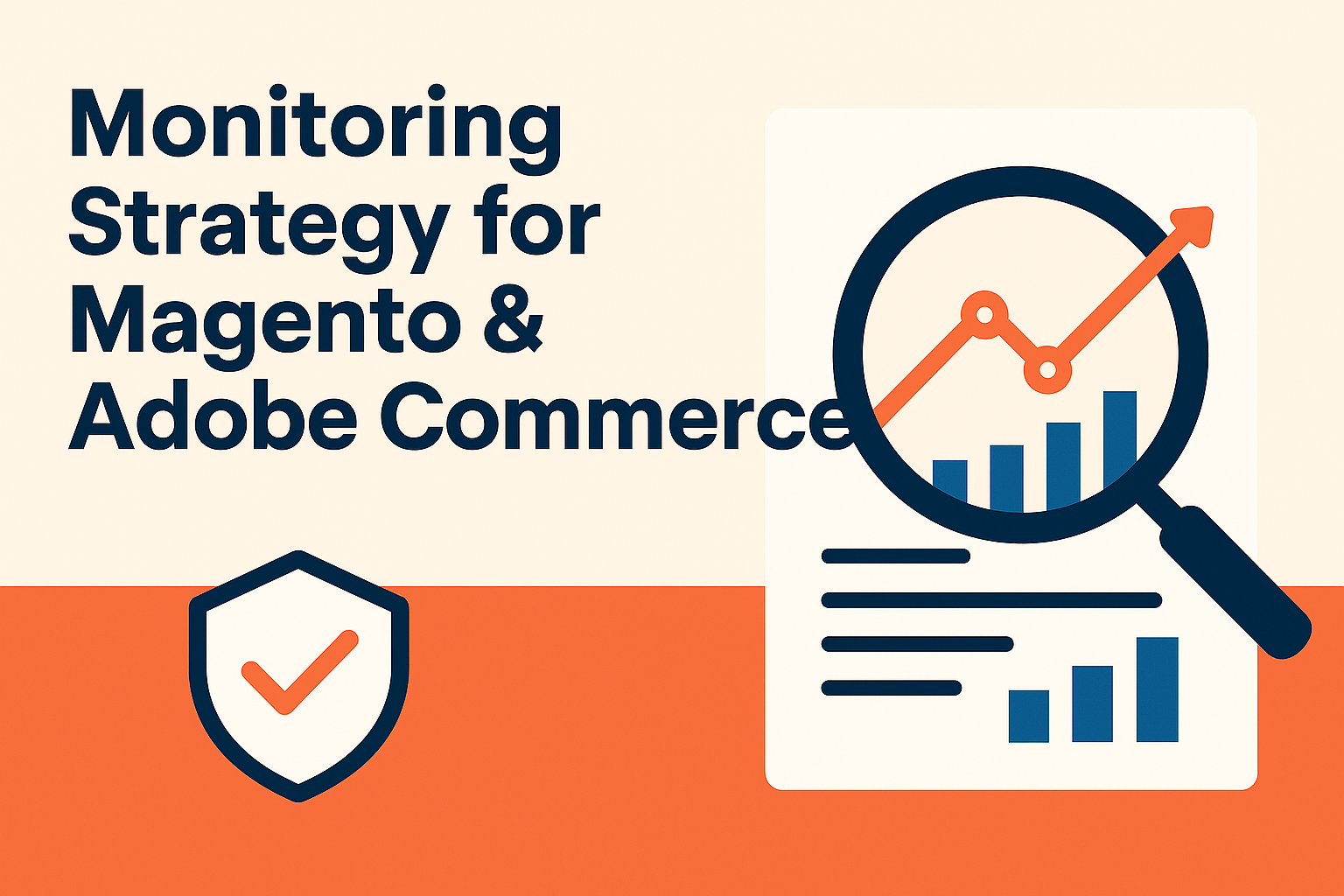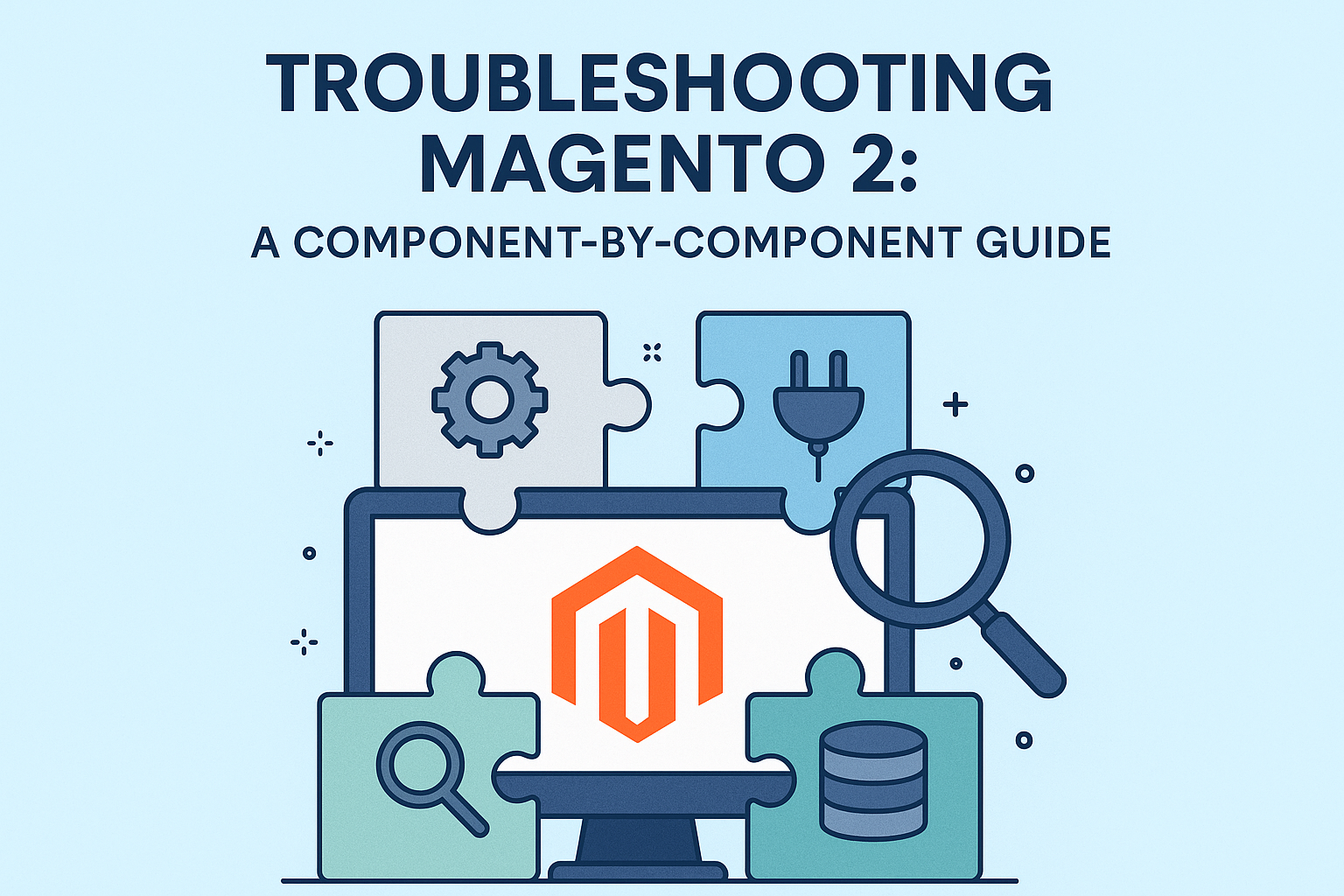Magento 2 (Adobe Commerce) Advanced Reporting Guide
Learn how to access magento 2 advanced reporting, set it up, and leverage it to gain insights that fuel your eCommerce growth.
3 min read
 Tim Bucciarelli
:
August 13, 2025
Tim Bucciarelli
:
August 13, 2025

Operating a Magento development or Adobe Commerce development site is a balancing act. These platforms give businesses the flexibility to deliver complex product catalogs, custom checkout flows, and integrations with ERP, CRM, and marketing systems. But with that flexibility comes the responsibility of keeping the storefront stable, secure, and performant.
For technical eCommerce managers, the challenge isn’t just fixing problems when they arise. It’s creating a framework to prevent issues before they disrupt customers, monitor for early warning signs, and diagnose and resolve problems quickly. That requires a mix of native platform tools and external services, with the right approach depending on whether you’re running Adobe Commerce Cloud or Magento Open Source on‑prem.
This post outlines a comprehensive approach across five challenge areas — application errors, performance and availability, security and compliance, data integrity, and customer experience.
The first step in maintaining a healthy Magento or Adobe Commerce site is making sure errors are surfaced and understood quickly. Application errors often manifest as slow checkout processes, broken product pages, or incomplete transactions. Left unchecked, these issues can degrade customer trust and directly impact revenue.
Magento provides several native tools to help identify and trace application-level problems. However, relying on these alone can leave gaps — especially when issues only affect certain browsers, geographies, or transaction paths.
system.log records system-level warnings and errors; exception.log captures unhandled exceptions; debug.log (if enabled) offers additional detail.var/report/ directory stores detailed error dumps for unhandled exceptions.bin/magento indexer:status and bin/magento cron:run confirm indexing and task health.ece-tools CLI.Even if your Magento or Adobe Commerce site is error‑free, poor performance or downtime can have just as severe an impact on revenue. Customers won’t tolerate slow page loads, unresponsive checkout steps, or intermittent outages.
Security and compliance are central to customer trust and legal responsibility. Magento and Adobe Commerce both provide a strong foundation, but no installation is immune to malware injections, unauthorized admin access, or PCI DSS non‑compliance.
Accurate product and pricing data is essential for trust. If customers see an item as in stock but it disappears at checkout, or if search returns incomplete results, confidence drops immediately.
Beyond performance and security, the customer journey must be monitored. Issues in navigation or checkout can silently cut into revenue even when infrastructure looks healthy.
Technology is only as good as the processes supporting it. Establishing consistent checks and automated alerts ensures issues don’t go unnoticed.
Maintaining a Magento or Adobe Commerce site requires more than reacting to problems. It demands a framework that addresses prevention, monitoring, diagnosis, and resolution.
Native tools provide a baseline of logs, caching, indexers, and reporting. Add‑on platforms like Noibu, eComscan, Site24x7, RUMVision, New Relic, and SecurityMetrics extend visibility into performance, security, and customer experience.
Platform differences matter: Adobe Commerce Cloud reduces infrastructure responsibilities but limits direct server control, while Magento Open Source on‑prem offers full control with greater responsibility.
The right mix will depend on your environment and resources, but a layered approach ensures you protect both your infrastructure and your customer experience — the ultimate driver of revenue.

Learn how to access magento 2 advanced reporting, set it up, and leverage it to gain insights that fuel your eCommerce growth.

Find an eCommerce solution that fits both your needs and budget with this guide comparing the pricing of Magento Open Source and Adobe Commerce.

Troubleshoot Magento 2 issues faster with this component-by-component guide to DI, plugins, search, logging, and config inconsistencies.